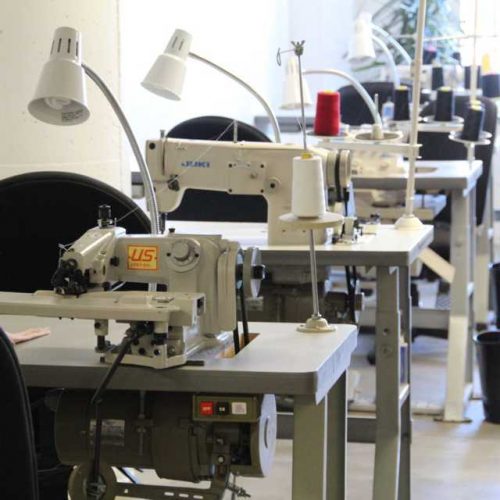Project Report For Stitching Unit
Introduction
Project report for Stitching Unit is as follows.
A stitching unit, also known as a sewing unit or sewing machine, is a mechanical device used to connect or bind cloth or other materials together with thread. It is an essential instrument in the textile and garment industries, as well as in a variety of other sectors that include sewing processes.
A stitching unit is generally comprised of a sewing machine with a needle and bobbin mechanism. The needle pierces the layers of fabric, and the thread from the bobbin is wrapped around it, generating stitches that hold the materials together. The sewing machine is controlled by a foot pedal or an electric motor, and it may be modified to regulate aspects such as stitch length, tension, and stitching speed.
Stitching machines are classified as single-needle machines, double-needle machines, overlock machines, and specialised equipment for certain stitching activities. Each machine serves a distinct purpose and is best suited for various stitching techniques and materials. Stitching units are essential in the textile and apparel industries.
They are used for sewing seams, attaching buttons, zippers, and other fasteners, hemming cloth edges, and making ornamental stitches. Sewing operators that are proficient in running stitching equipment are critical for maintaining high quality standards and attaining efficient output.
Stitching units have found use outside of the textile industry. They are used to create leather goods such as shoes, purses, upholstery, car interiors, and even medical equipment. Stitching machines are also employed in crafts and hobbies, allowing people to create their own clothing, accessories, and home décor.
Stitching units have evolved in tandem with technological advancements over the years. Sewing machines with computers now have automated functions, stitching patterns that may be programmed, and tight control over stitching parameters. These advancements have increased stitching productivity, precision, and ease of usage.

Benefits Of Stitching Unit
Efficiency and Productivity: Stitching units dramatically increase production by automating the stitching process. When compared to hand sewing, they provide for quicker stitching rates, uniform stitch quality, and reduced labour time. This enables for higher productivity, reduced lead times, and enhanced manufacturing efficiency.
Versatility: Stitching units exist in a variety of shapes and sizes, allowing for a wide range of stitching techniques, materials, and applications. They can handle a broad range of textiles, from delicate silk to heavy-duty denim, and conduct numerous stitching operations such as straight stitching, zigzag stitching, overlocking, and ornamental stitching. Because of its adaptability, stitching units are useful for a wide range of sectors, including clothing, upholstery, automotive, and crafts.
Precision and quality: Sewing machines produce precise and accurate stitching, maintaining constant stitch lengths, tension, and seam allowances. This results in high-quality finished goods with robust and long-lasting seams. The use of sewing units decreases human error, promotes consistency in stitching, and improves the overall quality and longevity of stitched objects.
Savings in Time and Money: Automated stitching devices save time and money by reducing the amount of manual labour required. They can do difficult stitching operations swiftly and effectively, decreasing the need for human hand sewing. This results in labour cost reductions and greater production capacity.
Innovation and Creativity: Stitching units have grown with technology advances, bringing unique features and capabilities. Computerised sewing machines offer programmed stitching patterns, embroidery designs, and customising choices. This encourages creativity and provides up opportunities for detailed patterns, personalised items, and one-of-a-kind decorations.
Accessibility: Sewing machines are widely available, ranging from industrial-grade machines used in factories to tiny and portable units for household usage. Individuals, entrepreneurs, and small enterprises may now join in sewing activities, create their own businesses, and unleash their creativity without large hurdles to entry.
Market Potential Of Stitching Unit
At a CAGR of 4.1%, the market for industrial stitching machines is expected to increase from its 2018 valuation of USD 4.10 billion to USD 5.63 billion by 2026.
There are several industries where industrial stitching machines are used, including clothing, auto upholstery, sportswear, and others. The market for industrial stitching machines is also anticipated to expand as a consequence of rising demand for high stitching accuracy and speed.
In addition, the growth of the industrial stitching machine market is being driven by the expansion of the textile industry as a result of rising consumer purchasing power in emerging nations. China’s consumer expenditure, for instance, went from USD 45,568.3 in 2017 to USD 49,903 in 2018. Additionally, the market for textile production is predicted to be driven by technical developments in the sector, which would boost demand for stitching machines.
Project Report Sample On Stitching Unit
Need Help?
Create 100% Bankable Project Report
